Showing Spotlights 9 - 16 of 559 in category All (newest first):
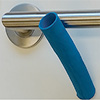 Researchers develop antimicrobial door handle covers using iodine-loaded metal-organic frameworks, providing a promising solution to prevent infection spread in healthcare and public spaces.
Researchers develop antimicrobial door handle covers using iodine-loaded metal-organic frameworks, providing a promising solution to prevent infection spread in healthcare and public spaces.
Jun 5th, 2024
 Researchers developed plasmonic nanodarts combining photothermal conversion and catalytic activity for effective cancer treatment and antimicrobial applications.
Researchers developed plasmonic nanodarts combining photothermal conversion and catalytic activity for effective cancer treatment and antimicrobial applications.
May 29th, 2024
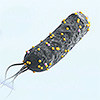 Engineered bacteria produce hydrogen sulfide and photothermal nanoparticles, enabling deep tumor penetration and synergistic chemodynamic cancer therapy.
Engineered bacteria produce hydrogen sulfide and photothermal nanoparticles, enabling deep tumor penetration and synergistic chemodynamic cancer therapy.
May 27th, 2024
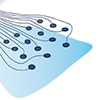 Researchers have developed 3D printable conducting polymer hydrogels for implantable bioelectronics, enabling long-term electrophysiological monitoring and modulation of organs.
Researchers have developed 3D printable conducting polymer hydrogels for implantable bioelectronics, enabling long-term electrophysiological monitoring and modulation of organs.
May 23rd, 2024
 Innovative quantum neuroelectronic devices mimic key functions of brain synapses, demonstrating promise for reducing effects of age-related cognitive decline.
Innovative quantum neuroelectronic devices mimic key functions of brain synapses, demonstrating promise for reducing effects of age-related cognitive decline.
May 15th, 2024
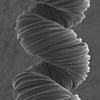 Researchers unlock the potential of conductive polymers in artificial muscle technology, achieving impressive performance with low-cost materials.
Researchers unlock the potential of conductive polymers in artificial muscle technology, achieving impressive performance with low-cost materials.
May 4th, 2024
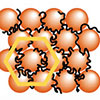 Scientists create self-assembling colloidal crystals from bacteriophages and synthetic polymers that could enable responsive drug delivery, antimicrobial surfaces, biosensors and tunable nanomaterials.
Scientists create self-assembling colloidal crystals from bacteriophages and synthetic polymers that could enable responsive drug delivery, antimicrobial surfaces, biosensors and tunable nanomaterials.
May 3rd, 2024
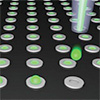 Inkjet printing emerges as a transformative technology for personalized medicine and drug delivery, offering a highly precise and flexible approach to drug formulation and delivery.
Inkjet printing emerges as a transformative technology for personalized medicine and drug delivery, offering a highly precise and flexible approach to drug formulation and delivery.
Apr 13th, 2024
 Researchers develop antimicrobial door handle covers using iodine-loaded metal-organic frameworks, providing a promising solution to prevent infection spread in healthcare and public spaces.
Researchers develop antimicrobial door handle covers using iodine-loaded metal-organic frameworks, providing a promising solution to prevent infection spread in healthcare and public spaces.
 Subscribe to our Nanotechnology Spotlight feed
Subscribe to our Nanotechnology Spotlight feed





